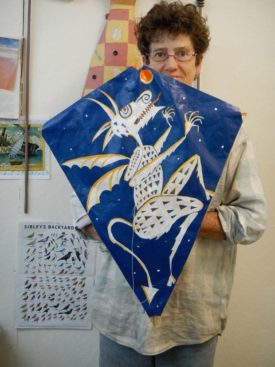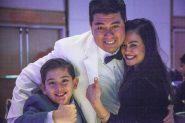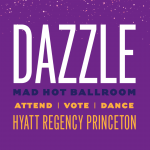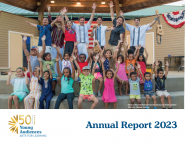Teaching Artist Spotlight – Marilyn Keating
“The arts are crucial to learning. Students learn to make decisions and mistakes.”
 When and how did you decide to become a teaching artist?
When and how did you decide to become a teaching artist?
I started teaching art after designing the art for the NJ Transit Riverline. Prior to that I taught carpentry and electric for tradeswomen, Habitat for Humanity, and helped write curriculum at a charter school for service learning at West Phila High School. After that I did all sorts of projects in Camden schools with Rutgers. My favorite was pairing visual artists and poets to make what I called visual poetry.
How did you first get involved with Young Audiences?
Rutgers gave me a scholarship to the Artist/Teacher Institute. I made a lot of connections doing an experimental afterschool program in Galloway. From there it led to Young Audiences and to The New Jersey State Council on the Arts Artists in Education Residency Program.
What’s the most gratifying thing that has happened while you’ve been with YA?
My favorite one might be a Target Art Education Grant for a small K-8 school in Downe Township on the Delaware Bay. Every student in the school made a kite. I sweet talked a guy from a fighter kite group to help 7th graders with their fighter kites and the sky was full of unique and glorious kites from a platypus to a horse crab on the final day.
I also had fun leading a teaching professional development program for this school. I had the educators create shadow puppets on an overhead projector. I read them Edward Gorey’s Ghastlycrumb Tinies which is a little on the dark side. They did some puppets based on this. It was hysterical and such a release for the teachers.
Describe a moment when you saw the arts transform or make a significant impact on a student, school or community.
At Downe Township I worked with students with special needs. I had done this before but here it had more of an impact on me. I believe all kids learn best experientially. They learn using all their senses and it seemed to me that these students needed it even more. I had a few students that were nonresponsive with their teachers. They loved making kites, which involved some math, measurement, and a little science. The teachers noticed and realized that we all learn differently and found ways to engage their students in a way they hadn’t seen before.
How does the work you do with YA inform and feed your own creative work?
Teaching and my own work often do inform one another. After doing stop motion at Bancroft School, I’ve started doing my own. I fell in love with the work of Isabella Rossillini and always wanted to do little films.
What other projects are you working on right now?
Stop motion is what I am doing right now. I also plan to work on mosaic sculpture in my garden again.

Why do you stay involved?
I think I stay involved because of this need I have to be of service. I enjoy making art with others maybe more than making art alone.
What are some of your favorite sources of creativity or inspiration – any specific blogs, books or places you like to visit?
Since I was a little girl I’ve been fascinated with the natural world and water. They still are the biggest influences in my world. I might canoe more than make personal art.
In your experience, what does including arts education in the curriculum give to students?
The arts are crucial to learning. Students learn to make decisions and mistakes. The ability to use a mistake in a new way is the creative process at its best. You take a project and see where it goes and have the courage to make changes. Art is about critical thinking and problem solving and it’s fun.
For more information on the Artists in Education Residency Program contact Michelle Baxter-Schaffer, Artists in Education Administrator at [email protected] or 609-984-7025.








